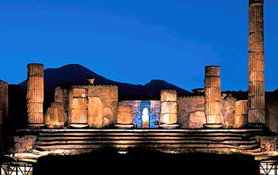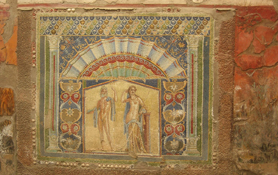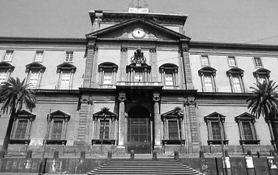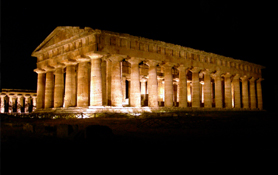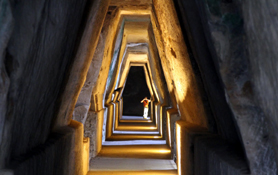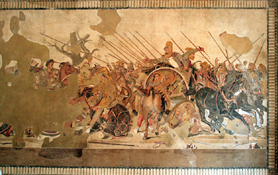The opulent villa at - Oplontis, whose ownership is tentatively attributed to Nero's wife, Poppaea. Hidden until the 1960's beneath the modem n streets of Torre Annunziata, and excavated using relatively modern techniques, it is now possible to wander from room to room gazing at a stunning sequence of wallpaintings, all left in situ. The site of Roman Oplontis has long been known from the Peutinger Table, a medieval copy of a 4th century road map. Its position, three miles from Pompeii and six. from Herculaneum, is marked with a square and two towers, the symbol used for thermal baths or villas. The exact location of the site on the ground was not known until relatively recently. Work during the 183Òs produced finds of Roman date, but it was not until 1964 that systematic excavation began under the supervision of Naples and Caserta. A magnificent villa began to emerge from a covering shroud nearly 7m deep, comprising 1.8m of lapilli (small stones) and ash, and 5m of mud. Excavation and restoration continue, today. The discovery of another villa nearby in 1974, has led to the suggestion that this was not an urban centre, but a holiday resort zone for the rich, comprising vast suburban villas enjoying seclusion and luxury. At a later date the east wing and the portico on the northern side were added, providing the characteristic colonnaded facade so popular along the coast. More than ninety rooms have so`far been revealed, many with beautiful wall paintings.







